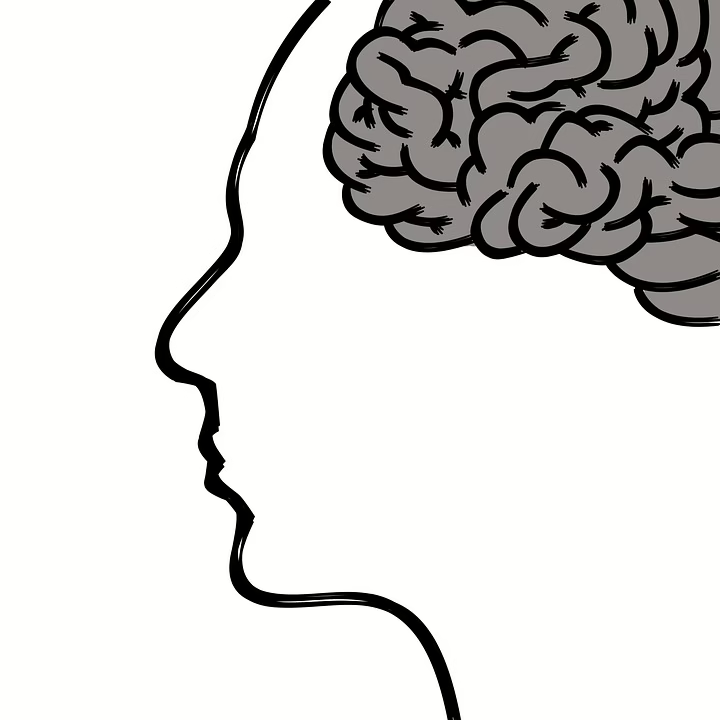What Makes Us Click? Exploring the Mysteries of Sexual Attraction
Abstract: Sexual attraction, a fundamental and complex human experience, remains a subject of intense scientific and social fascination. This article delves into the multifaceted nature of attraction, exploring the interplay of biological, psychological, social, and cultural factors that contribute to the feeling of being drawn to another person. We examine the evolutionary underpinnings of attraction, focusing on genetic compatibility, physical cues, and behavioral signals. Furthermore, we discuss the role of personality traits, shared values, and social contexts in shaping our preferences and choices. Finally, we consider the fluidity and diversity of attraction, acknowledging the influence of individual experiences and evolving societal norms. By integrating research from various disciplines, this article aims to provide a comprehensive overview of the factors that contribute to the enigmatic phenomenon of “clicking” with someone.
Keywords: Sexual attraction, Mate selection, Evolutionary psychology, Social psychology, Attraction theory, Physical attractiveness, Personality, Social context, Sexual orientation, Fluidity of attraction.
Introduction:
The question of “What makes us click?” has occupied philosophers, poets, and scientists for centuries. The feeling of being attracted to another person is a powerful and often inexplicable force that drives human interaction and shapes our social landscape [1]. From fleeting glances across a crowded room to the deep connection that forms the basis of long-term relationships, attraction is a cornerstone of human experience. But what exactly is it that fuels this profound feeling? Is it a predetermined set of biological imperatives, a complex interplay of psychological factors, or a reflection of our social and cultural conditioning? The answer, as with most complex human phenomena, is a multifaceted one.
This article aims to unravel some of the mysteries surrounding sexual attraction by examining the diverse factors that contribute to the feeling of being drawn to another person. We will explore the evolutionary roots of attraction, delving into the genetic and biological mechanisms that may influence our mate selection. We will then turn our attention to the psychological aspects of attraction, examining the role of personality traits, shared values, and cognitive biases in shaping our preferences. Furthermore, we will consider the influence of social and cultural contexts on attraction, recognizing how societal norms and expectations can shape our perceptions of desirability. Finally, we will acknowledge the fluidity and diversity of attraction, recognizing that individual experiences and evolving social attitudes can significantly impact our understanding of this complex phenomenon. By integrating insights from evolutionary psychology, social psychology, behavioral neuroscience, and sociology, this article seeks to provide a comprehensive and nuanced overview of what makes us click.
1. Evolutionary Foundations: The Biological Blueprint of Attraction
Evolutionary psychology posits that many of our behaviors and preferences, including those related to sexual attraction, are rooted in our evolutionary history. Natural selection favors traits and behaviors that enhance survival and reproductive success. Consequently, our attraction mechanisms are believed to be shaped by the need to identify and select mates who are likely to produce healthy and viable offspring [2].
- 1.1 Genetic Compatibility: The Quest for Strong Offspring:
One key evolutionary driver of attraction is the quest for genetic compatibility. Choosing a mate with a different immune system profile can lead to offspring with stronger immune systems and increased resistance to disease. The Major Histocompatibility Complex (MHC) genes play a crucial role in immune function, and research suggests that individuals may be unconsciously attracted to potential partners with dissimilar MHC profiles [3]. Studies have shown that women, in particular, tend to rate the body odor of men with dissimilar MHC genes as more attractive [4]. This suggests that our sense of smell may play a subtle but significant role in assessing genetic compatibility. While more research is needed to fully understand the intricacies of this process, the evidence points to a potential unconscious mechanism for detecting genetic diversity.
- 1.2 Physical Cues: Indicators of Health and Fertility:
Physical attractiveness is often considered a primary factor in initial attraction. However, evolutionary psychology suggests that physical traits deemed attractive are often indicators of underlying health, fertility, and genetic fitness. Symmetry, for example, is often associated with developmental stability and resistance to environmental stressors [5]. Faces with symmetrical features are generally rated as more attractive, possibly because symmetry reflects a lack of genetic mutations or developmental disruptions.
In women, certain physical features, such as a low waist-to-hip ratio (WHR), have been linked to higher fertility and lower risk of certain diseases [6]. Men may be subconsciously drawn to women with a low WHR because it signals reproductive potential. Similarly, in men, traits such as height, muscularity, and a strong jawline may be perceived as indicators of physical strength and dominance, which could have been advantageous for survival and reproduction in ancestral environments.
- 1.3 Age and Fertility: An Evolutionary Preference?
Evolutionary theory also suggests that age preferences in mate selection may be related to reproductive potential. Men, on average, tend to prefer women who are younger than themselves, potentially because female fertility declines with age [7]. Women, on the other hand, may prefer men who are slightly older, as they may be perceived as more resourceful and capable of providing for offspring [8]. However, it is crucial to acknowledge that these are generalizations and that individual preferences can vary greatly depending on cultural context, personal experiences, and individual goals.
- 1.4 Behavioral Signals: Cues of Personality and Social Status:
Attraction is not solely based on physical attributes; behavior plays a crucial role. Traits such as kindness, intelligence, and humor are often highly valued in potential partners. These behavioral traits can signal personality characteristics and social capabilities that are important for building and maintaining successful relationships. For example, a person who demonstrates empathy and compassion may be perceived as a caring and supportive partner, while someone who exhibits intelligence and wit may be seen as stimulating and engaging.
Furthermore, displays of social status and resourcefulness can also be attractive, particularly to women. In ancestral environments, men who could provide for their families were more likely to ensure the survival of their offspring. While the importance of resource acquisition may have evolved, the underlying preference for partners who can offer stability and security may still be present.
2. Psychological Dimensions: The Role of Personality and Cognitive Processes
Beyond the biological imperatives outlined by evolutionary psychology, the psychological dimensions of attraction play a significant role in shaping our preferences and influencing our choices. Personality traits, shared values, and cognitive biases all contribute to the complex equation of attraction.
- 2.1 Personality Traits: The Allure of Compatibility:
Personality compatibility is a critical factor in long-term relationship satisfaction. While “opposites attract” may hold some initial appeal, research suggests that individuals tend to be more attracted to those who share similar personality traits [9]. This is likely because shared personality traits can lead to greater understanding, reduced conflict, and increased opportunities for shared activities and interests.
The “Big Five” personality traits (Openness, Conscientiousness, Extraversion, Agreeableness, and Neuroticism) are commonly used to assess personality. Individuals tend to be more attracted to those who score similarly on these traits, particularly on Agreeableness and Conscientiousness [10]. Shared values and beliefs, which are often related to personality, are also strong predictors of attraction and relationship stability.
- 2.2 The Mere-Exposure Effect: Familiarity Breeds Attraction:
The mere-exposure effect suggests that we tend to develop a preference for things that we are familiar with [11]. This principle applies to interpersonal attraction as well. Repeated exposure to a person can lead to increased liking, even if we initially had no strong feelings about them. This may explain why individuals often develop relationships with people they encounter frequently, such as colleagues, classmates, or neighbors.
- 2.3 Cognitive Biases: Distortions of Perception:
Cognitive biases can also influence our perceptions of attractiveness. The halo effect, for example, occurs when a positive impression in one area influences our perception of other unrelated areas [12]. If we find someone physically attractive, we may also assume that they are intelligent, kind, and successful. Conversely, the horns effect occurs when a negative impression in one area leads to negative assumptions about other areas. These biases can distort our judgment and lead us to make inaccurate assessments of potential partners.
- 2.4 Reciprocity of Liking: The Power of Mutual Interest:
The principle of reciprocity suggests that we tend to like people who like us [13]. Knowing that someone is attracted to us can significantly increase our own attraction to them. This is likely because being liked boosts our self-esteem and validates our sense of worth. Reciprocity of liking can create a positive feedback loop, where mutual attraction intensifies over time.
- 2.5 The Role of Similarity: Birds of a Feather Flock Together:
As mentioned earlier, similarity is a strong predictor of attraction. However, the specific types of similarity that matter can vary depending on the individual and the context. Shared attitudes, values, interests, and backgrounds can all contribute to a sense of connection and compatibility. Similarity can also reduce uncertainty and make interactions feel more comfortable and predictable.
3. Social and Cultural Influences: Shaping Our Ideals and Preferences
While biological and psychological factors play a crucial role in shaping attraction, social and cultural influences cannot be ignored. Societal norms, cultural values, and media portrayals all contribute to our understanding of beauty, desirability, and appropriate relationship behavior.
- 3.1 Cultural Ideals of Beauty: Shifting Standards of Attractiveness:
Cultural ideals of beauty vary significantly across time and place. What is considered attractive in one culture may be perceived as unattractive in another. These ideals are often shaped by media representations, social trends, and historical influences. For example, the ideal body type for women has fluctuated throughout history, ranging from curvaceous figures to slender physiques. Similarly, standards of attractiveness for men have also evolved, with varying emphasis on traits such as muscularity, height, and facial hair.
- 3.2 Social Norms and Expectations: The Script of Romance:
Social norms and expectations play a significant role in shaping our romantic behavior. These norms dictate appropriate ways to meet, interact, and form relationships. For example, in many cultures, there are established scripts for dating, courtship, and marriage. These scripts can influence our expectations and behaviors, even if we are not consciously aware of them.
- 3.3 The Impact of Media: Portrayals of Love and Desire:
Media portrayals of love and desire can have a profound impact on our understanding of attraction. Movies, television shows, and social media often present idealized versions of relationships, which can create unrealistic expectations and influence our perceptions of what is considered attractive and desirable. The constant exposure to these idealized images can also contribute to body image issues and feelings of inadequacy.
- 3.4 Social Context: The Influence of Environment:
The social context in which we meet someone can also influence our attraction to them. A person may appear more attractive in a positive or exciting environment, such as a party or a vacation, than in a mundane or stressful situation. This is likely because our emotional state can influence our perceptions of others. The concept of “excitation transfer” suggests that arousal from one source can be misattributed to another person, leading to increased attraction [14].
- 3.5 The Role of Social Learning: Modeling Attraction:
We also learn about attraction through social learning. We observe the relationships of others, listen to their experiences, and internalize their beliefs about love and relationships. This process can shape our own preferences and expectations. For example, if we grow up in a family where certain traits are consistently praised, we may be more likely to be attracted to individuals who possess those traits.
4. Fluidity and Diversity: Challenging Fixed Categories
While the factors discussed above provide a framework for understanding attraction, it is crucial to acknowledge the fluidity and diversity of human experience. Sexual orientation is not always fixed or binary, and individual preferences can change over time. Furthermore, the concept of “attraction” itself is multifaceted and can encompass a range of experiences beyond sexual desire.
- 4.1 Sexual Orientation: A Spectrum of Experiences:
Sexual orientation is a complex and multifaceted aspect of human identity. While many individuals identify as exclusively heterosexual or homosexual, others experience attraction to both sexes (bisexual) or may not experience sexual attraction at all (asexual). It is important to recognize that sexual orientation is a spectrum of experiences and that individuals may define their own identities in ways that resonate with them.
- 4.2 The Kinsey Scale: Measuring Sexual Behavior and Attraction:
The Kinsey Scale, developed by Alfred Kinsey in the mid-20th century, was one of the first attempts to quantify sexual orientation [15]. The scale ranges from 0 (exclusively heterosexual) to 6 (exclusively homosexual), with intermediate values representing varying degrees of attraction to both sexes. While the Kinsey Scale has been criticized for its limitations, it helped to challenge the binary view of sexual orientation and to recognize the existence of individuals who experience attraction to both men and women.
- 4.3 Sexual Fluidity: Changes Over Time:
Research suggests that sexual orientation can be fluid for some individuals, meaning that their attractions and behaviors may change over time [16]. This fluidity is more commonly reported by women than men, but it can occur in both sexes. Factors such as life experiences, relationship patterns, and personal growth can all contribute to changes in sexual attraction.
- 4.4 Demisexuality and Graysexual: Beyond the Binary:
The terms “demisexual” and “graysexual” describe individuals who experience sexual attraction differently from the majority of the population. Demisexuals only experience sexual attraction to someone after forming a strong emotional bond. Graysexuals experience sexual attraction rarely or only under specific circumstances [17]. These identities highlight the diversity of sexual experiences and challenge the assumption that everyone experiences sexual attraction in the same way.
- 4.5 Aromanticism: The Absence of Romantic Attraction:
Aromanticism describes individuals who do not experience romantic attraction. Aromantic individuals may still experience sexual attraction, but they do not have a desire for romantic relationships. Aromanticism is distinct from asexuality, which is the lack of sexual attraction.
- 4.6 Beyond Sexual Attraction: Emotional and Intellectual Connection:
Attraction is not solely defined by sexual desire. Emotional and intellectual connection can be just as important in forming meaningful relationships. Some individuals may prioritize emotional intimacy and intellectual stimulation over physical attraction. The concept of “sapio sexuality” describes individuals who are primarily attracted to intelligence. These preferences highlight the diversity of human attraction and the importance of considering factors beyond physical appearance and sexual compatibility.
5. Modern Challenges and Future Directions
The digital age has introduced new complexities to the landscape of attraction. Online dating apps have transformed the way people meet and interact, creating both opportunities and challenges. The ease of access to potential partners has led to a culture of “swiping” and quick judgments, which can de-emphasize the importance of deeper connections and compatibility. The algorithms that power these apps can also create filter bubbles, limiting exposure to individuals outside of pre-defined preferences.
Furthermore, the rise of social media has contributed to unrealistic expectations about relationships and body image. The constant exposure to curated images and idealized lifestyles can lead to feelings of inadequacy and dissatisfaction. It is crucial to develop critical thinking skills and to recognize the limitations of social media representations.
Future research should focus on exploring the long-term effects of online dating on relationship satisfaction and stability. It is also important to investigate the impact of social media on body image and self-esteem. Furthermore, researchers should continue to explore the fluidity and diversity of attraction, recognizing that individual experiences are shaped by a complex interplay of biological, psychological, social, and cultural factors. Understanding the nuances of attraction can help us to build more fulfilling relationships and to create a more inclusive and accepting society.
Conclusion:
The question of “What makes us click?” is a complex and multifaceted one. Sexual attraction is influenced by a dynamic interplay of biological predispositions, psychological factors, social contexts, and cultural norms. Evolutionary pressures have shaped our preferences for traits that signal health, fertility, and genetic fitness. Personality compatibility, shared values, and cognitive biases all contribute to the psychological dimensions of attraction. Social and cultural influences shape our ideals of beauty and desirability, while individual experiences and evolving social attitudes contribute to the fluidity and diversity of attraction.
Ultimately, attraction is a deeply personal and subjective experience. While general patterns and principles can be identified, individual preferences and experiences will always vary. Understanding the complexities of attraction can help us to navigate the complexities of human relationships and to appreciate the richness and diversity of human experience. By recognizing the multifaceted nature of attraction, we can move beyond simplistic explanations and embrace a more nuanced and compassionate understanding of what makes us click. This understanding is crucial for fostering healthier relationships, promoting self-acceptance, and building a more inclusive society where diverse forms of attraction are valued and respected. Further research is needed to fully unravel the mysteries of attraction, particularly in the context of evolving social norms and technological advancements. Continued exploration in this area promises to deepen our understanding of human connection and the forces that drive our most intimate relationships.
References:
[1] Fisher, H. E. (2004). Why we love: The nature and chemistry of romantic love. Henry Holt and Company.[2] Buss, D. M. (2003). The evolution of desire: Strategies of human mating. Basic Books.
[3] Wedekind, C., Seebeck, T., Bettens, F., & Paepke, A. J. (1995). MHC-dependent mate preferences in humans. Proceedings of the Royal Society B: Biological Sciences, 260(1359), 245-249.
[4] Jacob, S., McClintock, M. K., Zelner, K. L., & McAnulty, G. B. (2002). Pheromones and human sexual behavior. Physiology & Behavior, 77(2), 161-168.
[5] Thornhill, R., & Gangestad, S. W. (1999). Facial attractiveness. Trends in Cognitive Sciences, 3(12), 452-460.
[6] Singh, D. (1993). Body shape and women’s attractiveness: The critical role of waist-hip ratio. Human Nature, 4(3), 297-321.
[7] Buss, D. M. (1989). Sex differences in human mate preferences: Evolutionary hypotheses tested in 37 cultures. Behavioral and Brain Sciences, 12(1), 1-49.
[8] Kenrick, D. T., & Keefe, R. C. (1992). Age preferences in mates reflect sex differences in human reproductive strategies. Behavioral and Brain Sciences, 15(1), 75-133.
[9] Luo, S., & Klohnen, E. C. (2005). Assortative mating and marital quality: A meta-analysis. Journal of Personality and Social Psychology, 88(2), 304-326.
[10] Gonzaga, G. C., Campos, B., & Bradbury, T. (2007). Attachment security and the functions of emotion in marriage. Journal of Family Psychology, 21(2), 199-207.
[11] Zajonc, R. B. (1968). Attitudinal effects of mere exposure. Journal of Personality and Social Psychology, 9(2, Pt.2), 1-27.
[12] Thorndike, E. L. (1920). A constant error in psychological ratings. Journal of Applied Psychology, 4(1), 25-29.
[13] Curtis, R. C., & Miller, K. (1986). Believing another likes or dislikes you: Meta-analysis of behavioral effects. Psychological Bulletin, 99(3), 291-305.
[14] Dutton, D. G., & Aron, A. P. (1974). Some evidence for heightened sexual attraction under conditions of high anxiety. Journal of Personality and Social Psychology, 30(4), 510-517.
[15] Kinsey, A. C., Pomeroy, W. B., & Martin, C. E. (1948). Sexual behavior in the human male. W.B. Saunders.
[16] Diamond, L. M. (2008). Sexual fluidity: Understanding women’s love and desire. Harvard University Press.
[17] Bogaert, A. F. (2015). Understanding asexuality. Rowman & Littlefield Publishers.


























Add Comment